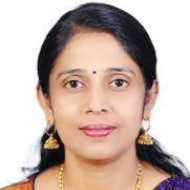
H. R. Chennamma
Work place: Department of Computer Applications, JSS Science and Technology University, India
E-mail: hrchennamma@jssstuniv.in
Website: https://orcid.org/0000-0002-3858-7834
Research Interests:
Biography
H. R. Chennamma received Ph.D. in Computer Science from the University of Mysore in the area of Digital Image Forensics in 2011. Subsequently, she served as a Post Doctoral fellow in the Department of Computer Science and Engineering, University of North Texas, USA in 2012. Currently, she is a Professor in the Department of Computer Applications, JSS Science and Technology University, Mysuru. Previously, she has been awarded a prestigious Fellowship under the scheme of Research and Development in Forensics from the Department of Home Affairs, Government of India in 2005. Chennamma served as a Senior Research Fellow (SRF) in Central Forensic Science Laboratory, Hyderabad. She is the recipient of two “Best Scientific Paper Awards”. Her research areas of interest are Image and Video forensics, pattern recognition and Computer Vision.
Author Articles
Medical Image Synthesis Using Variational Autoencoder and Generative Adversarial Networks
By Sinchana Ganesh Madhushree B. Sowmya K. N. H. R. Chennamma
DOI: https://doi.org/10.5815/ijem.2025.03.05, Pub. Date: 8 Jun. 2025
Nowadays, image synthesis has become essential in the medical field for lever- aging deep learning technique to improve decision- making. Our proposed research work combines Variational Autoencoders (VAEs) and Generative Adversarial Networks (GANs) to synthesize medical im- ages, enhancing diagnostics, medical training, and image analysis. The model presented combines a Discriminator, and a Variational Autoencoder to capitalize on the strengths of both VAEs and GANs. The Decoder is tasked with generating synthetic medical images, the Discriminator evaluates their distinguishing factor, and the VAE learns a probabilistic mapping from input to latent space, ensuring a structured representation of underlying medical features. The training process involves a decoder creating realistic medical images, a discriminator distinguishing real from synthetic ones, and a VAE capturing meaningful data variations in the latent space. Verified on the dataset sourced from the Kaggle. The model refines its parameters iteratively using a training loop, resulting in enhanced quality and variety of generated medical images. The proposed VAE- GAN model demonstrates its efficacy by generating diverse and realistic medical images. The structured latent space contributes to interpretability, making the images suitable for purposes like data augmentation, anomaly detection, and machine learning model training.
[...] Read more.Other Articles
Subscribe to receive issue release notifications and newsletters from MECS Press journals